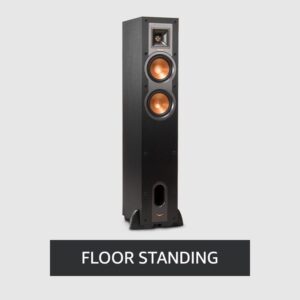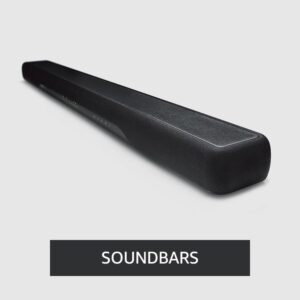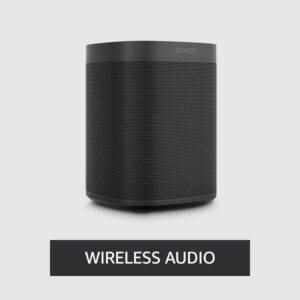How to test a subwoofer: with a multimeter
Sometimes, you may not notice that the subwoofer is not working properly because it has been blown out. We will often experience distorted sounds when our subwoofers have blown out. Our overall experience will be ruined when we have blown subwoofers.
I will share with you today how you can test the subwoofer to see if there are any issues. In this article, I will go over the most common ways you can test and go through most of them in detail. To learn how to test a subwoofer, please read until the end of this article.
Table of Contents
If a subwoofer blows, how do I know?

A subwoofer is the most important sound system component in terms of sound quality. Therefore, it will be easy for you to detect problems with your subwoofer. The sound output is obvious, and you can see the impact.
You will know your subwoofer has blown when the sound is distorted or breaks between frequencies. A subwoofer that’s blown out can also suffer from a decline in quality.
Despite this, it’s impossible to tell whether the speakers are blown out just by listening to them. To tell if your subwoofer is blown, you will need to test it.
Related: How To Measure A Subwoofer?
How to test a subwoofer with a multimeter

You can use a multimeter to check if your subwoofer is blown out. Multimeters are useful for other kinds of work, so you should get one if you don’t own one.
This multimeter is being used to measure the resistance of the voice coil. A subwoofer’s performance can be determined by the volume, which tells you whether or not it is working properly. You can follow the steps below to determine how much resistance is in the voice coils.
- First, turn off Your subwoofer, or its power source should be cut. It is impossible to get the correct measurements if you do not do this.
- Next, remove all cables and wiring from your subwoofer. Ensure that your subwoofer is completely disconnected from all input and power cables.
- After that, remove the enclosure from the subwoofer to allow proper access. After uncovering the woofer, the voice coils can be accessed. It depends on what subwoofer you have.
- Attaching your multimeter to the voice coil terminals of the subwoofer will allow you to measure the voice coil. Use the positive end of the multimeter to measure the positive terminal on your voice coil.
- Next, you must connect the negative probe to the negative terminal.
- In the end, you should see the resistance of your subwoofer by turning on your multimeter, which you should see when you turn it on.
That’s how you test, but what does the outcome look like? There’s no need to worry about that. I’ve got you covered. A multimeter can give you three possible readings.
A multimeter reading that shows no resistance indicates that the voice coils of your subwoofers have already been damaged. Reading can also detect a blown-out voice coil that shifts too much continuously.
It is considered safe if the resistance is greater than 1 ohm. In this case, the subwoofer is not blown out but has some other issues.
Related: How To Wire A Dual Voice Coil Subwoofer Or Speaker.
How to test subwoofer without Amp
Subwoofers can be tested by listening to their sound. Your subwoofer can be diagnosed much more easily if you have an amp. If you have an amplifier attached, it is possible to hear all the flaws and distortion that result from a blown-out subwoofer.
Testing your subwoofer without an amp is another option if you want more information and aren’t equipped with an amp.
As a result, you can perform a test of your subwoofer without having to connect it to the amp without the need to connect it to the amp at all. You should be able to do this by following the steps below, and you should be fine.
- Start by assembling the subwoofer testing tools you will need. An electric tester or multimeter, a 9V battery, and a wire are required for this step.
- Connecting the battery to the subwoofer can be done once you have all that. The coil’s positive terminal must be attached to the 9V battery’s positive end with the wire. The negative ends should be done in the same way.
- The woofer’s cone should rise after the battery is connected successfully. Once the battery is connected, your subwoofer should rise as soon as it is connected. Disconnecting should result in a drop in the level.
- It’s safe to assume the subwoofer is blown out if it doesn’t show any movement.
- It is then possible to confirm whether the subwoofer is blown out using a tester or multimeter. The resistance of the subwoofer can be measured using the previous method. It means your woofer is blown out if the reading is not 1 ohm or above.
Your subwoofer can be easily checked to see if it is blown out, needs to be repaired, or has other problems.
Conclusion
By testing a subwoofer yourself, you can save money as it can tell you if there are any problems with the voice coil or its placement without going to a mechanic. When you know what is wrong, you can either replace the parts yourself or hire a professional.
Additionally, you shouldn’t have much trouble testing your subwoofer for any problems since it’s not that difficult. Fixes and repairs, however, should always be left to professionals rather than being attempted by the person. Testing the problems will reveal that they are much more affordable than you expected.
FAQs:
1. How do I know if my subwoofer is blown?
You can identify a blown subwoofer by distorted or interrupted sound output and a decline in sound quality. To confirm, use testing methods such as a multimeter or observing cone movement.
2. How can I test a subwoofer using a multimeter?
To test with a multimeter, disconnect the subwoofer from power and remove its enclosure. Attach the multimeter’s positive and negative probes to the voice coil terminals. A no-resistance reading indicates damage, while a safe reading is above 1 ohm.
3. Can I test a subwoofer without an amplifier?
Yes, you can test a subwoofer without an amp using a 9V battery, wire, and multimeter. Connect the battery’s positive and negative terminals to the coil’s corresponding terminals. If the cone doesn’t move, it may be blown out.
4. What does a rising cone indicate during subwoofer testing?
A rising cone indicates the subwoofer’s functionality when connecting a 9V battery to the subwoofer. If the cone doesn’t rise upon the battery connection, it might be blown or damaged.
5. Why is it important to test a subwoofer myself?
Self-testing a subwoofer saves money and allows you to identify issues like blown voice coils or misplacement. You can then choose to replace parts independently or seek professional repair services for a more affordable solution.

Author: Baqarrasheed
I know all about home theater items! I have been doing this for more than three years now. I am good with things like sound systems, TVs, projectors, and all that cool entertainment gear. I like to help folks by testing and talking about these gadgets on Hometheaterjournal. I want to make sure everyone can create an awesome entertainment setup at home without any confusion.
I write the creative content for HometheaterJournal.






















